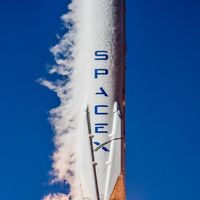A New Era: Trump’s Economic Vision Unveiled
January 21, 2025, 9:47 pm

Location: United States, District of Columbia, Washington
Employees: 5001-10000
Founded date: 2002
Total raised: $7.53B

Location: United States, Texas, Austin
Employees: 10001+
Founded date: 2003
Total raised: $3.86B
On January 20, 2025, Donald Trump was sworn in as the 47th President of the United States, marking a return to the Oval Office after a tumultuous first term. The atmosphere was electric, charged with anticipation and hope. His supporters gathered in droves, eager to witness the dawn of what Trump called a "revolution of common sense." The inaugural ceremony was not just a formality; it was a stage for bold promises and sweeping changes.
In his inaugural address, Trump wasted no time. He laid out a vision that echoed his previous tenure but with a renewed vigor. The focus was clear: the economy. Trump declared a national energy emergency, a move that sent ripples through the political landscape. He vowed to boost domestic oil and gas production, aiming to fill the strategic reserves and export American energy globally. This was not just about energy; it was about jobs, he insisted. The promise of employment hung in the air like a sweet fragrance, enticing and hopeful.
The energy sector is a cornerstone of the American economy. By declaring this emergency, Trump positioned the U.S. as a leader in energy production once again. The country had already been a major player in global gasoline exports, and this new directive aimed to solidify that status. It was a bold stroke, reminiscent of a painter adding vibrant colors to a canvas, transforming the landscape of American energy.
But the economic overhaul didn’t stop there. Trump swiftly signed an executive order to dismantle the electric vehicle mandate established by the previous administration. This move was framed as a lifeline for American autoworkers. The electric vehicle incentives, which had promised to reshape the automotive industry, were now on the chopping block. Trump’s message was clear: traditional manufacturing would reign supreme. He painted a picture of a revitalized auto industry, where American-made cars would dominate the roads once more.
In a surprising twist, Trump introduced the Department of Government Efficiency, or DOGE, led by none other than Elon Musk. This new department aimed to cut through the bureaucratic red tape that often stifles innovation and efficiency. It was a nod to the tech-savvy, forward-thinking approach that Musk embodies. The partnership between the two was like a collision of two powerful forces, each with the potential to reshape the future.
Another significant executive order established the External Revenue Service. This new entity would focus on collecting tariffs and taxes from foreign nations, flipping the script on traditional taxation. Instead of burdening American citizens, Trump proposed to enrich them by taxing foreign countries. It was a bold gamble, one that could either pay off handsomely or backfire spectacularly.
As Trump’s administration began to take shape, the emphasis on in-person work for federal employees signaled a return to traditional norms. Remote work, a trend that gained traction during the pandemic, was now deemed inefficient. The mandate for full attendance echoed a desire for accountability and productivity. It was a call to arms, urging federal workers to return to their posts and contribute to the nation’s recovery.
The first days of Trump’s presidency were marked by a flurry of activity. His administration promised nearly 100 executive orders, each one a potential game-changer. The speed and intensity of these actions were reminiscent of a race car speeding down a straightaway, leaving competitors in the dust. The focus was on immediate results, a stark contrast to the slower, more deliberative pace often associated with government.
Critics, however, were quick to voice their concerns. The sweeping changes raised questions about the long-term implications for the economy and the environment. Would the push for fossil fuels undermine efforts to combat climate change? Would dismantling electric vehicle incentives hinder innovation in the automotive sector? These questions loomed large, casting shadows over Trump’s ambitious plans.
Yet, for many supporters, the promise of jobs and economic revitalization outweighed the potential pitfalls. The allure of a booming economy, driven by energy independence and manufacturing prowess, was a siren song that resonated deeply. It was a vision of America as a powerhouse, reclaiming its status on the global stage.
As the inaugural festivities unfolded, the mood was celebratory. Supporters cheered, waving flags and donning “Make America Great Again” hats. The atmosphere was charged with optimism, a belief that change was not just possible but imminent. Trump’s return to power was seen as a chance to reset the course of the nation, to steer it back toward what many viewed as a more prosperous path.
In the coming weeks and months, the world will watch closely. The economic policies set forth by Trump will be scrutinized, debated, and tested. The stakes are high, and the outcomes uncertain. Will this new era of economic policy fulfill its promises, or will it falter under the weight of its own ambition? Only time will tell. For now, the stage is set, and the curtain has risen on a new chapter in American history.
In his inaugural address, Trump wasted no time. He laid out a vision that echoed his previous tenure but with a renewed vigor. The focus was clear: the economy. Trump declared a national energy emergency, a move that sent ripples through the political landscape. He vowed to boost domestic oil and gas production, aiming to fill the strategic reserves and export American energy globally. This was not just about energy; it was about jobs, he insisted. The promise of employment hung in the air like a sweet fragrance, enticing and hopeful.
The energy sector is a cornerstone of the American economy. By declaring this emergency, Trump positioned the U.S. as a leader in energy production once again. The country had already been a major player in global gasoline exports, and this new directive aimed to solidify that status. It was a bold stroke, reminiscent of a painter adding vibrant colors to a canvas, transforming the landscape of American energy.
But the economic overhaul didn’t stop there. Trump swiftly signed an executive order to dismantle the electric vehicle mandate established by the previous administration. This move was framed as a lifeline for American autoworkers. The electric vehicle incentives, which had promised to reshape the automotive industry, were now on the chopping block. Trump’s message was clear: traditional manufacturing would reign supreme. He painted a picture of a revitalized auto industry, where American-made cars would dominate the roads once more.
In a surprising twist, Trump introduced the Department of Government Efficiency, or DOGE, led by none other than Elon Musk. This new department aimed to cut through the bureaucratic red tape that often stifles innovation and efficiency. It was a nod to the tech-savvy, forward-thinking approach that Musk embodies. The partnership between the two was like a collision of two powerful forces, each with the potential to reshape the future.
Another significant executive order established the External Revenue Service. This new entity would focus on collecting tariffs and taxes from foreign nations, flipping the script on traditional taxation. Instead of burdening American citizens, Trump proposed to enrich them by taxing foreign countries. It was a bold gamble, one that could either pay off handsomely or backfire spectacularly.
As Trump’s administration began to take shape, the emphasis on in-person work for federal employees signaled a return to traditional norms. Remote work, a trend that gained traction during the pandemic, was now deemed inefficient. The mandate for full attendance echoed a desire for accountability and productivity. It was a call to arms, urging federal workers to return to their posts and contribute to the nation’s recovery.
The first days of Trump’s presidency were marked by a flurry of activity. His administration promised nearly 100 executive orders, each one a potential game-changer. The speed and intensity of these actions were reminiscent of a race car speeding down a straightaway, leaving competitors in the dust. The focus was on immediate results, a stark contrast to the slower, more deliberative pace often associated with government.
Critics, however, were quick to voice their concerns. The sweeping changes raised questions about the long-term implications for the economy and the environment. Would the push for fossil fuels undermine efforts to combat climate change? Would dismantling electric vehicle incentives hinder innovation in the automotive sector? These questions loomed large, casting shadows over Trump’s ambitious plans.
Yet, for many supporters, the promise of jobs and economic revitalization outweighed the potential pitfalls. The allure of a booming economy, driven by energy independence and manufacturing prowess, was a siren song that resonated deeply. It was a vision of America as a powerhouse, reclaiming its status on the global stage.
As the inaugural festivities unfolded, the mood was celebratory. Supporters cheered, waving flags and donning “Make America Great Again” hats. The atmosphere was charged with optimism, a belief that change was not just possible but imminent. Trump’s return to power was seen as a chance to reset the course of the nation, to steer it back toward what many viewed as a more prosperous path.
In the coming weeks and months, the world will watch closely. The economic policies set forth by Trump will be scrutinized, debated, and tested. The stakes are high, and the outcomes uncertain. Will this new era of economic policy fulfill its promises, or will it falter under the weight of its own ambition? Only time will tell. For now, the stage is set, and the curtain has risen on a new chapter in American history.
